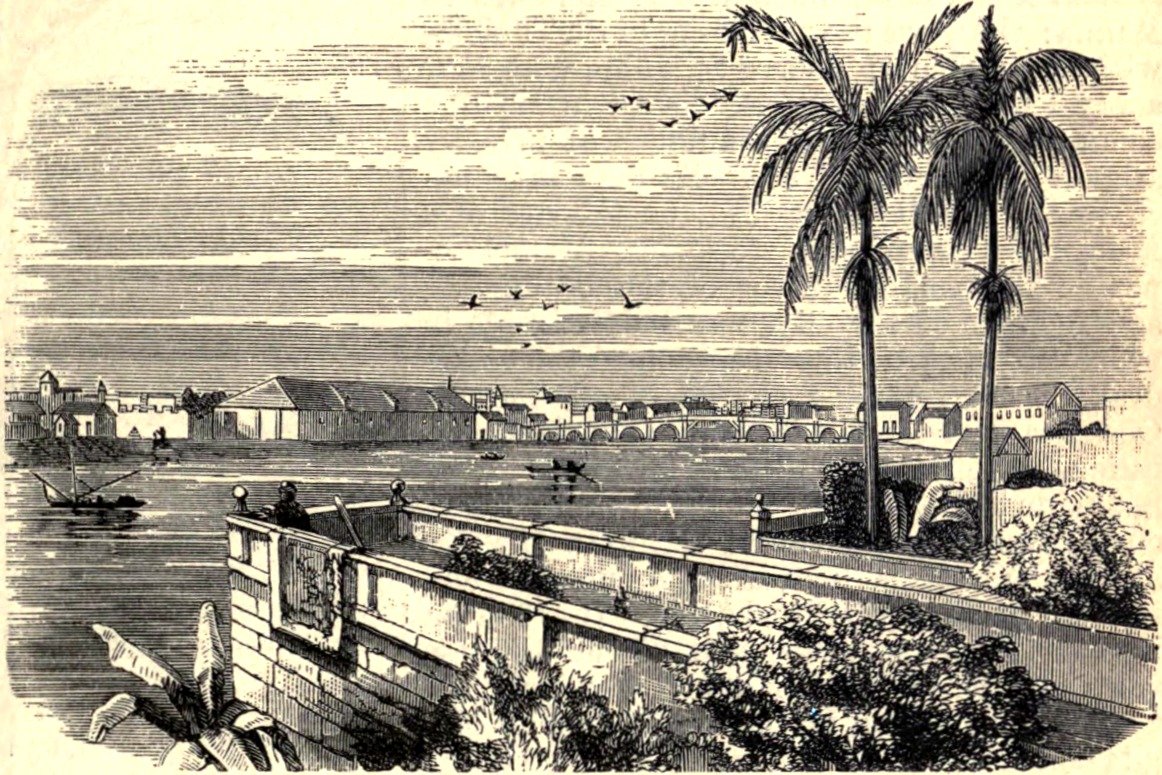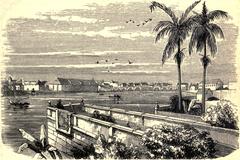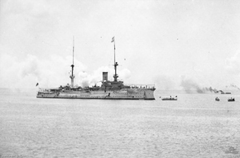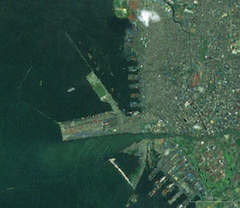
Port of Manila Visiting Hours, Tickets, and Travel Guide
Date: 14/06/2025
Introduction
The Port of Manila, located along the natural harbor of Manila Bay in Metro Manila, is the Philippines’ largest and busiest maritime gateway. Its legacy is deeply rooted in centuries of trade, cultural exchange, and historical transformation. Today, it serves not only as a vital hub for commerce and travel but also as a bridge to Manila’s rich heritage, with proximity to significant landmarks such as Intramuros and Rizal Park.
This detailed guide covers everything travelers need to know about the Port of Manila: visiting hours, ticketing, terminal facilities, accessibility, ferry operations, and nearby attractions. It also highlights the port’s ongoing modernization and offers essential travel tips for a smooth and enriching visit.
For the latest updates, consult official sources:
(Philippine Ports Authority)
(CruiseMapper)
(Philstar).
Table of Contents
- Historical Overview
- Port Layout and Terminal Facilities
- Visiting the Port: Hours, Tickets, and Tips
- Nearby Historical Sites and Attractions
- Infrastructure Upgrades and Expansion
- Passenger Services and Amenities
- Ferry Operations and Destinations
- Practical Tips for Visitors
- Rizal Monument: History & Visitor Guide
- FAQ
- Summary
- References
Historical Overview
Early Maritime Roots and Pre-Colonial Trade
Long before the arrival of European powers, the Port of Manila flourished as a vibrant trading hub. Its strategic location connected the archipelago with Asian civilizations, including China, Japan, and Southeast Asia. Merchants exchanged ceramics, textiles, and spices, laying the groundwork for Manila’s cosmopolitan culture (Philippine Ports Authority).
Spanish Colonial Era and the Galleon Trade
The Spanish established Manila as their East Indies capital in 1571. The port became the linchpin of the Manila-Acapulco Galleon Trade (1565–1815), connecting Asia and the Americas and fostering a multicultural society. Goods, ideas, and traditions flowed through the port, shaping the Philippines’ identity.
19th Century Expansion and American Colonial Period
Manila was opened to international trade in 1834, attracting merchants from the US, Britain, and beyond. The port expanded rapidly, adopting steamship technology and modern infrastructure. Under American rule (post-1898), facilities were further upgraded, and Manila North and South Harbors were developed to handle both domestic and international shipping.
Post-War Growth and Modernization
After WWII, the port underwent extensive reconstruction. Containerization and public-private investments in the 20th century led to the creation of specialized terminals, including the Manila International Container Terminal (MICT). Today, the port is the nation’s main gateway for both cargo and passengers.
Port Layout and Terminal Facilities
Main Passenger Terminals and Visiting Hours
-
North Port Passenger Terminal (Pier 4):
- Open daily: 5:00 AM–10:00 PM
- Modern facility (opened 2013) with a 2–3 million passenger annual capacity
- Ticket counters, spacious waiting halls, parking, and security screening (CruiseMapper)
-
Solaire Cruise Center:
- Integrated with the Solaire Resort and Casino
- State-of-the-art terminal for large cruise ships
- Direct access to luxury hotels, shopping, dining, and entertainment
- Modern customs and immigration processing (CruiseMapper)
-
South Harbor:
- Primarily handles cargo but occasionally receives cruise vessels
- Equipped with multi-purpose berths, cargo yards, and customs offices (NCTS TSSP)
Visiting the Port: Hours, Tickets, and Tips
Visiting Hours
- Operational: 24/7 for port activities
- Public Access: Passenger terminals generally open 5:00 AM–10:00 PM
- Ticket Counters: Business hours vary by operator; check in advance
Ticketing
- Ferry & Cruise Tickets: Purchase online through official operator websites, at ticket booths, or via travel agencies (PHBus).
- Advance Booking: Recommended, especially during holidays and weekends
- Entry Fees: No general admission; tickets only required for ferry/cruise travel
Accessibility
- Wheelchair-friendly terminals with ramps and accessible restrooms
- Advance coordination advised for special needs
Travel Tips
- Arrive early for check-in and security screening
- Bring valid government-issued ID
- Use authorized transport services for safety
- Be mindful of restricted zones and port regulations
Nearby Historical Sites and Attractions
- Intramuros: Manila’s walled city, home to Fort Santiago, San Agustin Church, and museums
- Rizal Park: A sprawling park celebrating national hero José Rizal
- National Museum Complex: Art, anthropology, and natural history collections
- Binondo (Chinatown): Culinary and cultural hotspot
- Manila Ocean Park: Family-friendly marine attraction
All sites are easily accessible by taxi, ride-hailing apps, or public transport (TripJive).
Infrastructure Upgrades and Expansion
- Government Initiatives: Over PHP 4 billion invested in new cruise terminals, berthing expansions, and improved processing facilities (Philstar)
- Technological Improvements: Just-In-Time (JIT) policy reduces cargo dwell time and streamlines operations (NCTS TSSP)
- Connectivity: Projects to expand road networks and integrate public transport with the port (RichestPH)
Passenger Services and Amenities
- Security: X-ray screening, customs, and immigration clearance
- Amenities: Air-conditioned lounges, food outlets, duty-free shops, luggage services, free Wi-Fi
- Transportation: Taxis, ride-sharing, shuttle buses, and parking available
- Accessibility: Facilities for persons with disabilities; inquire in advance for assistance
Ferry Operations and Destinations
- Major Operator: 2GO Travel (routes to Mindoro, Cebu, Palawan, Caticlan/Boracay) (Guide to the Philippines)
- Other Operators: Serve regional islands and cities
- Schedules: Check operator websites; arrive 2 hours before departure
- Requirements: Valid ID, printed or digital ticket
Practical Tips for Visitors
- Safety: Keep valuables secure and use official porters (The Broke Backpacker)
- Weather: Manila is hot and humid; stay hydrated and check forecasts during rainy season (June–November)
- Language: English widely spoken; transactions in Philippine Peso (PHP)
- Connectivity: Wi-Fi may be limited—carry a SIM card for data
Rizal Monument: History & Visitor Guide
Overview
The Rizal Monument, in Rizal Park, Manila, honors the national hero Dr. José Rizal. Designed by Richard Kissling and unveiled in 1913, it is a symbol of Filipino patriotism and the centerpiece for national ceremonies.
Visitor Information
- Hours: 5:00 AM–9:00 PM daily
- Admission: Free
- Accessibility: Wheelchair-friendly, paved paths, restrooms, shaded areas
- Tips: Visit early or late in the day, join guided tours for historical insight, and don’t miss the daily flag-raising (PHBus)
Nearby Attractions
- National Museum of the Philippines
- Intramuros
- Manila Ocean Park
Special Events
National events such as Rizal Day (December 30) and Independence Day (June 12) feature flag ceremonies and performances.
FAQ
Q: What are the Port of Manila’s visiting hours?
A: Terminals open daily 5:00 AM–10:00 PM, but port operations run 24/7.
Q: How do I buy ferry or cruise tickets?
A: Purchase online, at official counters, or via travel agencies.
Q: Are guided tours available?
A: Yes, local operators offer tours focusing on maritime history and nearby sites.
Q: Is the port accessible for people with disabilities?
A: Yes, with ramps and accessible facilities; coordinate in advance if needed.
Q: What are popular nearby attractions?
A: Intramuros, Rizal Park, National Museum Complex, Binondo, Manila Ocean Park.
Summary
The Port of Manila represents a dynamic blend of historical significance, modern commerce, and cultural heritage. From its pre-colonial roots and pivotal role in the Manila-Acapulco Galleon Trade to its current status as a premier cruise and ferry hub, the port continues to evolve. Visitors enjoy comprehensive amenities, seamless connectivity, and easy access to Manila’s most treasured sites. Ongoing investments and tech-driven improvements ensure the port remains a leading gateway in Southeast Asia.
For official schedules, updates, and travel tips, always consult trusted sources and consider using travel apps like Audiala for real-time guidance (Philippine Ports Authority, CruiseMapper).
References
- Philippine Ports Authority
- CruiseMapper
- Philstar
- NCTS TSSP
- PHBus
- TripJive
- Guide to the Philippines
- The Broke Backpacker
For seamless travel planning, download the Audiala app for ferry bookings, real-time updates, and exclusive Manila travel guides.






































































